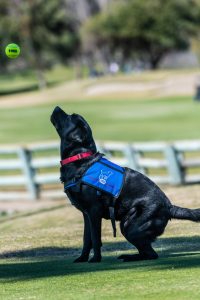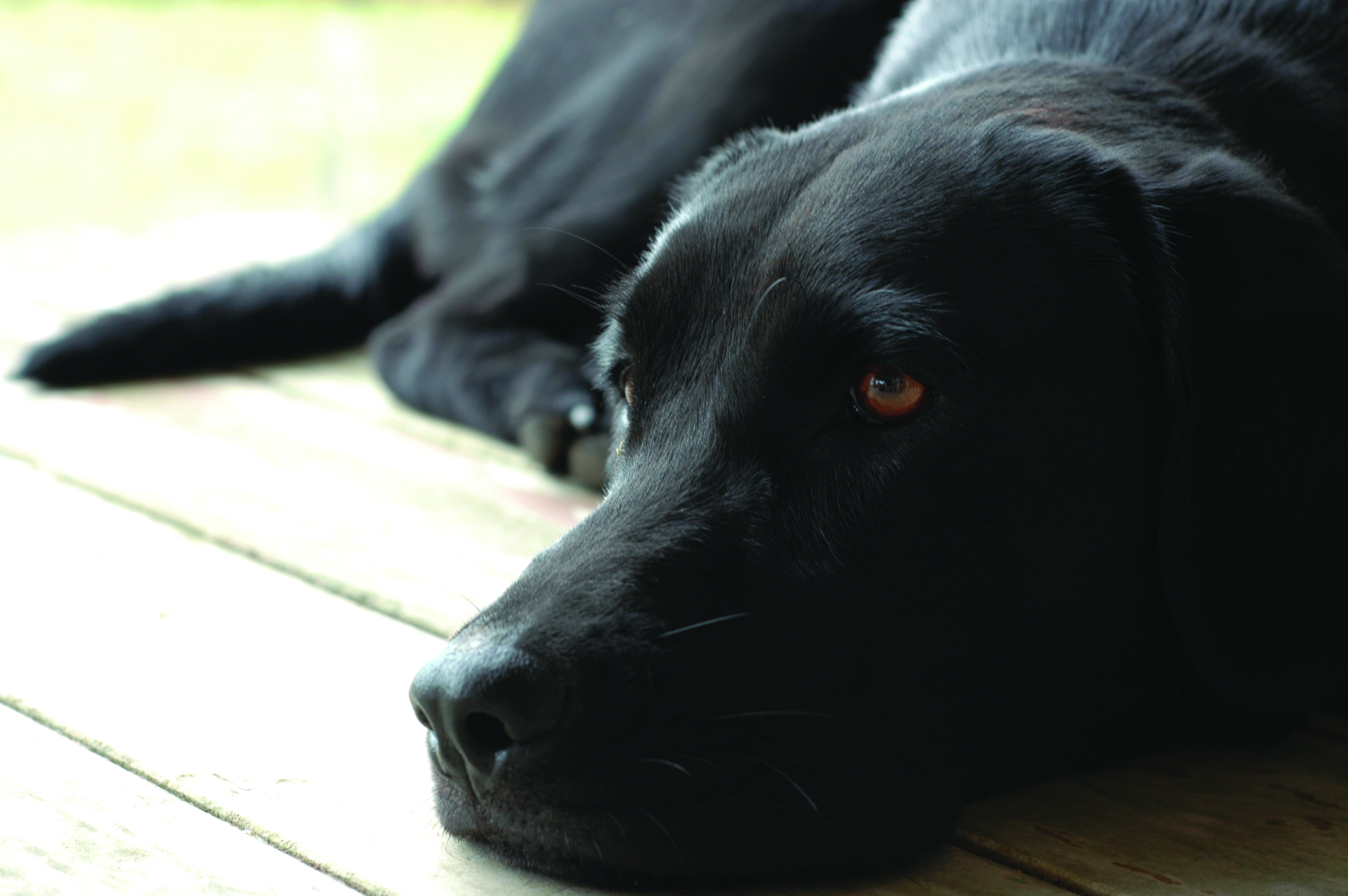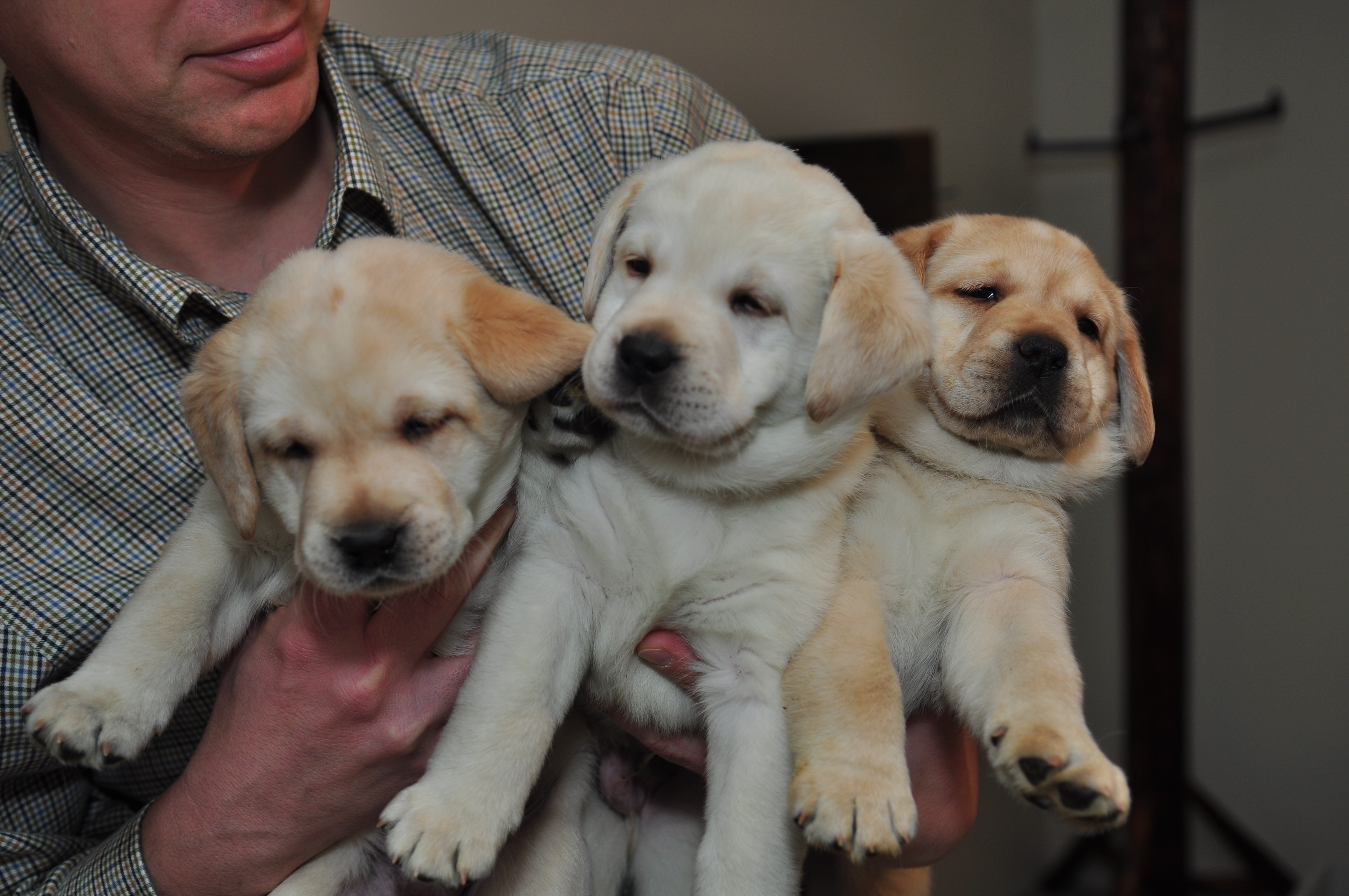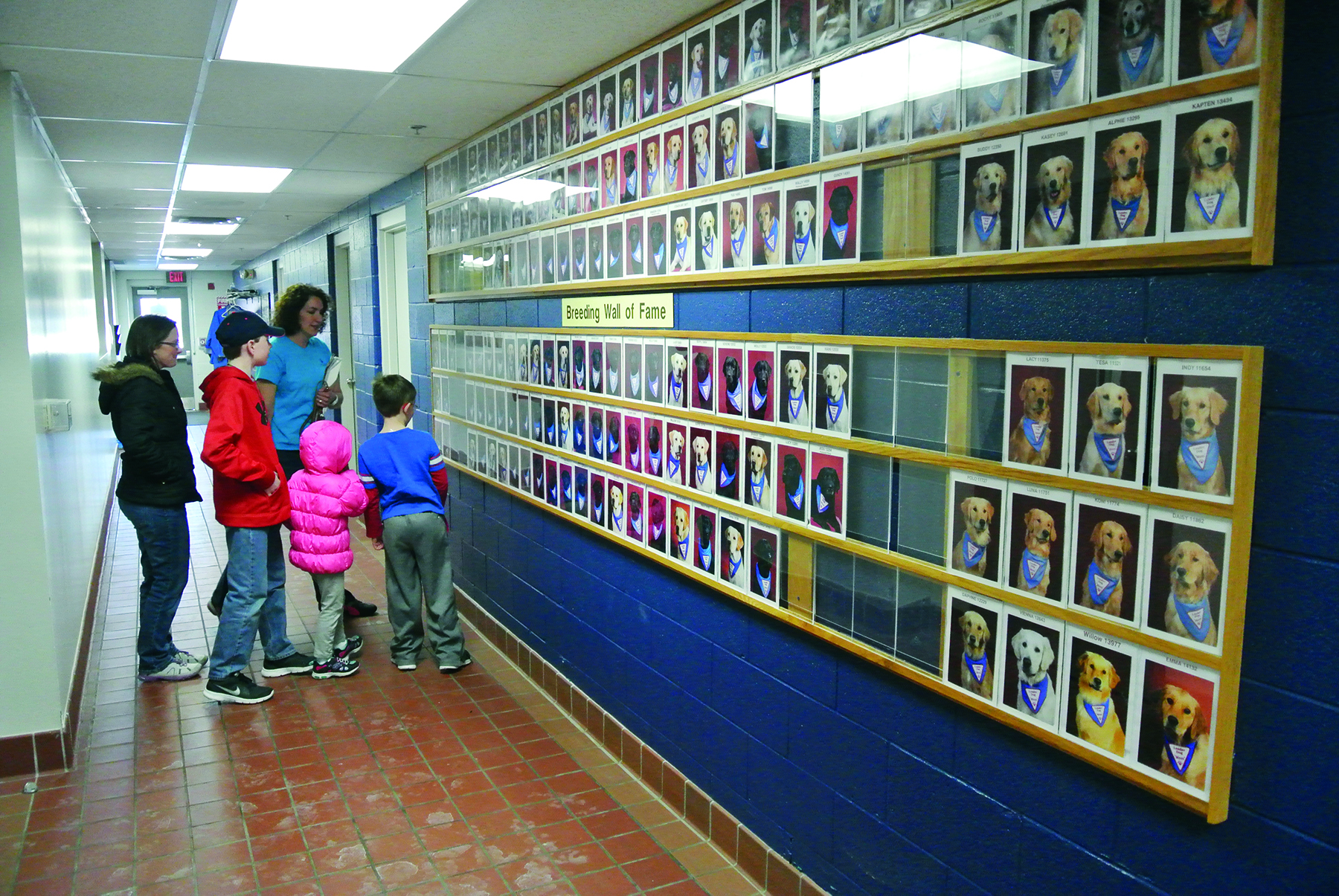Murphy is a thundering black English Lab who has made it his business to chill. He may be 85 pounds and almost two years old, which some would consider a teenager, but he’s a professional chiller, conditioned to relax by default on a mat from eight weeks of age. Calmness is his game, and even though he’s a laid back kind of guy anyway, his youth doesn’t get the better of him. He’s learned to chillax regardless of distractions as a potential service dog.
And many non-service Labs are also conditioned for calmness.
“That is the number one thing we need from them…we retrain them to do nothing, to do a whole lot of just hanging out, not reacting,” says Jan Cizik, KPA-CTP and a Fear Free Certified Trainer who has also raised Murphy for service work. With every dog she’s trained at her business, Whole Dog Training in San Diego, California, that’s the first thing she wants the dog to know.
A Lab’s versatility is ideal for capturing calm behavior – quietly reinforcing when in a relaxed state. Ultimately, Fido learns to chill out by default, whether you’re working at home, during family time, or out at a restaurant.
“Sitting in a park doing nothing can be difficult for many dogs yet empowering; they learn that they can be calm no matter where they are instead of becoming overstimulated,” says Chiara Perri, Professional Force Free trainer and owner of Point Cook Dog Training in Australia.
Chiara always encourages conditioning for calmness with her clients as she sees more and more over-aroused dogs who find it difficult to slow down and stop. Many owners don’t understand the importance of teaching a dog to self-soothe until they are exhausted, she says.
Just like people, Labs can become workaholics, always busy, running at the dog park or with field work. “They find it hard to slow down and stop,” Chiara says.
“At home, they struggle to rest, pacing and enticing the handler to play all the time. This is not good for the dog and not good for the relationship as it can be tiring!”
Teaching calm differs from teaching stay. A “stay” is teaching a skill – stillness whether sitting or standing following a command or hand signal while the dog awaits a release cue. With capturing calmness, work is toward a conditioned response with an emotional aspect. The brain releases feel good chemicals during a relaxed emotional state.
A default calm is not an exercise but rather reinforcing a state of being settled. The handler is not telling the dog to calm; it’s a default response.
As humans, we often tend to do the opposite when our pups relax, according to Nan Arthur, CDBC, CPDT-KSA, KPA-CTP, and author of Chill Out Fido!
“They’re resting and we totally ignore that. But then when they start to spiral up, they demand-bark or they start getting busy or getting into things, grabbing things in their mouth, then we pay attention to them.”
Why not capture by reinforcing what we like?

Murphy (Photo credit Allan Hess, allan.hess@smugmug.com)
Capturing and Conditioning
To start, grab a mat or rug for the dog, some mid-value treats (something your pup is not hog-wild about), and find a quiet place in the house. After your dog has exercised and a bit tired is an ideal time.
Nan’s process is simple. Sit relaxed in front of the mat with a bowl of small-sized treats, and load treats onto the mat. Once the head is down and sniffing, treats rain down onto the mat. When the head comes up, treats end. Don’t look your pup in the eye, talk, or touch, which is a temptation for owners.
They’ll tire of standing on the mat and sit or lie down. Then, it’s a bonus round of dropping treats between the front paws. It’s the dog’s choice of sitting or standing. However, once the point of sitting is reached, don’t reinforce standing. Once he’s down on the mat, don’t reinforce sitting. Pay only for the next level, reinforcing for about three minutes. When time is up, toss some treats off the mat, pick it up, and quietly move on.
Conditioning optimally takes two or three times a day. If you don’t have that much time, once a day will do; however, the more you practice, the quicker your dog learns to settle. When you come back to a session, drop the mat and preload treats on it. Don’t make eye contact or talk (which can stimulate your dog), and pick up where you left off. If the dog goes down on the mat, only treat for that. Keep reinforcing toward the goal of down.
Around the House
Once familiar with chilling on the mat, bring it out as a relaxation cue during computer or TV time. Toss a few treats over while your buddy is resting to acknowledge his behavior. You’re reinforcing the emotional context of relaxation. It feels good to rest, and your pup gets rewarded for that.
“When we work on capturing calmness, we are looking for nice slow breathing, lying on the side, soft and relaxed body, that nice sense of relaxation…. This in time becomes almost contagious, in that the dog actually quite likes being relaxed, and we can induce this state over time,” Chiara explains.
If you have multiple dogs, you can teach one at a time or as a group. Put down several mats, kindergarten style, and reinforce the dogs individually. Again, when the head goes down and the focus is not on you or begging for treats, it’s pay time.
Customize to fit your needs. If the pup is in Zen mode anywhere around the house (especially if not focused on you), quietly drop a few treats without talking or arousing him, Nan suggests.
“We’re letting the dog get an education about how to live peacefully with us. And that’s, I think, often what’s missing. We just expect them to know it,” Nan says. “If we teach them a way to relax, you relax. And that’s awesome for everybody.”







